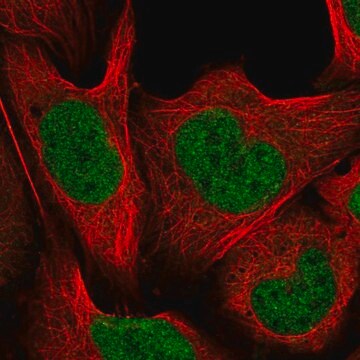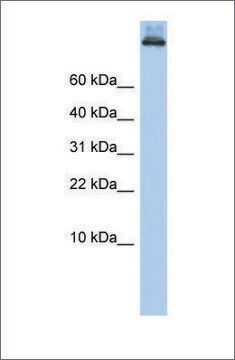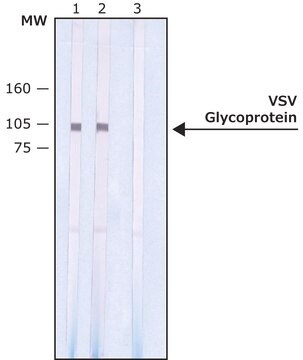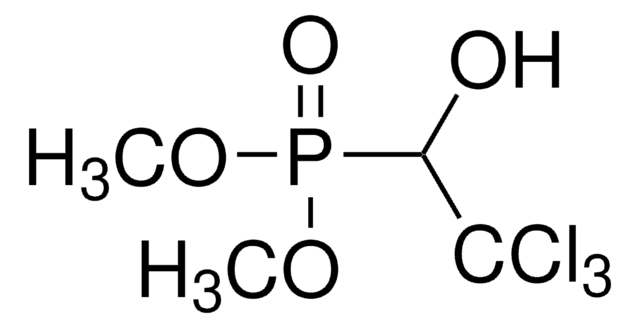推薦產品
生物源
rabbit
共軛
unconjugated
抗體表格
affinity isolated antibody
抗體產品種類
primary antibodies
無性繁殖
polyclonal
形狀
buffered aqueous solution
分子量
antigen ~89 kDa
物種活性
human
加強驗證
recombinant expression
Learn more about Antibody Enhanced Validation
濃度
~1.5 mg/mL
技術
indirect immunofluorescence: 10-20 μg/mL using HeLa cells
western blot: 1-2 μg/mL using HEK-293T cells expressing human Cullin-4A
UniProt登錄號
運輸包裝
dry ice
儲存溫度
−20°C
目標翻譯後修改
unmodified
基因資訊
human ... CUL4A(8451)
一般說明
Cullin-4 (Cul4) proteins are the core components of ubiquitin E3 ligases. Mammalian cells express two distinct but highly homologous cullin-4 proteins, cullin-4A and cullin-4B.
Cullin-4A is a protein encoded by CUL4A gene in humans.
應用
Anti-Cullin-4A antibody produced in rabbit is used for Immunofluorescence at a concentration of 10-20mg/mL using HeLa cells and is also used for western blotting at a concentration of 1-2μg/mL using HEK-293T cells expressing human Cullin-4A.
生化/生理作用
Cullin-4 (Cul4) proteins are components of ubiquitin E3 ligases that regulate cell cycle, genome stability, DNA replication and transcription. CUL4-based E3 ligase plays an important role for the repression of photomorphogenesis in plants (like Arabidopsis thaliana).
Cullin-4A (Cul4A) is involved in identifying specific targets for ubiquitylation. The Cul4A gene is known to be amplified and up-regulated in breast carcinoma and many other tumor types. Cul4A associates with damage-specific DNA binding proteins (DDB1 and DDB2). It functions as substrate recruiting factors for Cul4A-Roc1 ligases. Cul4A is known to ubiquitylate several target proteins including DDB1/DDB2, CDT1 (chromatin licensing and dna replication factor 1), DNA repair protein complementing XP-C cells (XPC), histone H2A, H3 and H4. In response to DNA damage Cul4A complex regulates protein stability of p53 and mouse double minute 2 homolog (MDM2)/ human double minute 2 homolog (HDM2).
外觀
solution in 0.01 M phosphate buffered saline, pH 7.4, containing 15 mM sodium azide.
免責聲明
Unless otherwise stated in our catalog or other company documentation accompanying the product(s), our products are intended for research use only and are not to be used for any other purpose, which includes but is not limited to, unauthorized commercial uses, in vitro diagnostic uses, ex vivo or in vivo therapeutic uses or any type of consumption or application to humans or animals.
未找到適合的產品?
試用我們的產品選擇工具.
儲存類別代碼
10 - Combustible liquids
閃點(°F)
Not applicable
閃點(°C)
Not applicable
個人防護裝備
Eyeshields, Gloves, multi-purpose combination respirator cartridge (US)
分析證明 (COA)
輸入產品批次/批號來搜索 分析證明 (COA)。在產品’s標籤上找到批次和批號,寫有 ‘Lot’或‘Batch’.。
DNA damage binding protein component DDB1 participates in nucleotide excision repair through DDB2 DNA-binding and cullin 4A ubiquitin ligase activity
Li J, et al.
Cancer Research, 66(17), 8590-8597 (2006)
The human homologue for the Caenorhabditis elegans cul-4 gene is amplified and overexpressed in primary breast cancers
Chen LC, et al.
Cancer Research, 58(16), 3677-3683 (1998)
Haodong Chen et al.
The Plant cell, 18(8), 1991-2004 (2006-07-18)
Repression of photomorphogenesis in Arabidopsis thaliana requires activity of the COP9 signalosome (CSN), CDD, and COP1 complexes, but how these three complexes work in concert to accomplish this important developmental switch has remained unknown. Here, we demonstrate that Arabidopsis CULLIN4
Leigh Ann Higa et al.
Cell cycle (Georgetown, Tex.), 5(1), 71-77 (2005-12-03)
The CUL4 (cullin 4) proteins are the core components of a new class of ubiquitin E3 ligases that regulate replication and transcription. To examine the roles of CUL4 in cell cycle regulation, we analyzed the effect of inactivation of CUL4
E T Kipreos et al.
Cell, 85(6), 829-839 (1996-06-14)
The gene cul-1 (formerly lin-19) is a negative regulator of the cell cycle in C. elegans. Null mutations cause hyperplasia of all tissues. cul-1 is required for developmentally programmed transitions from the G1 phase of the cell cycle to the
我們的科學家團隊在所有研究領域都有豐富的經驗,包括生命科學、材料科學、化學合成、色譜、分析等.
聯絡技術服務









